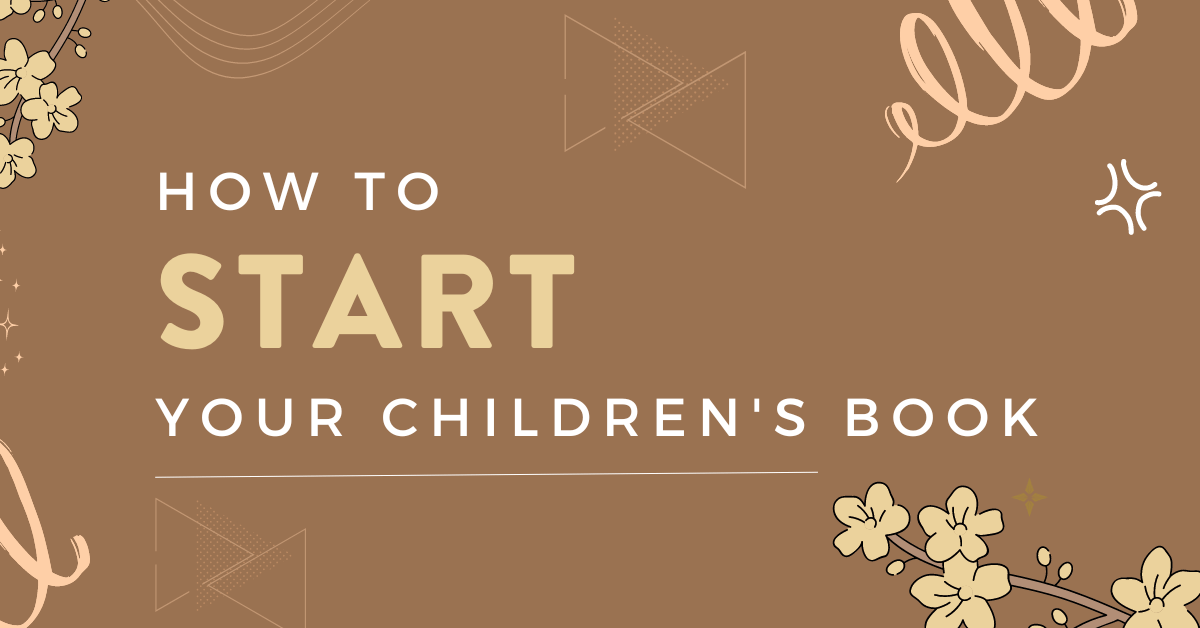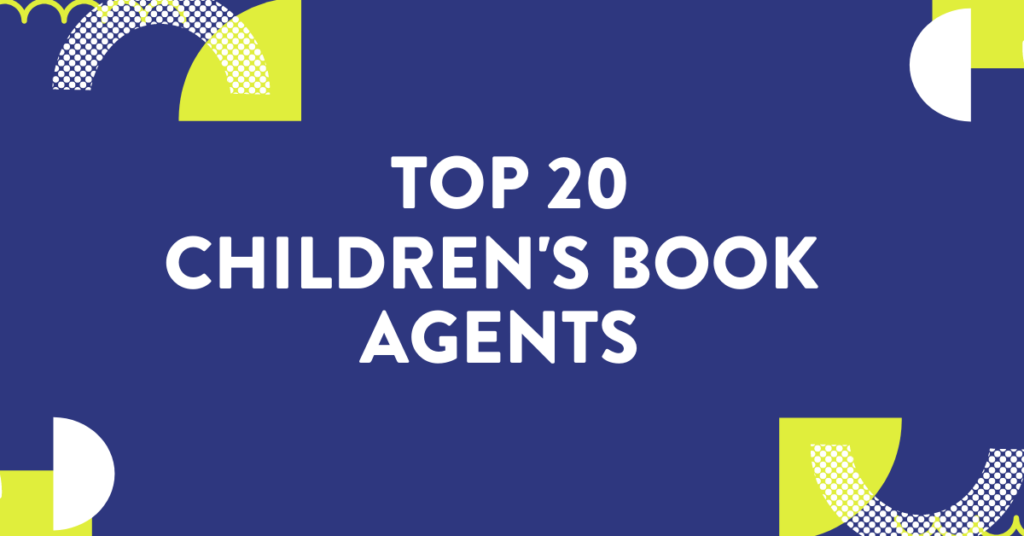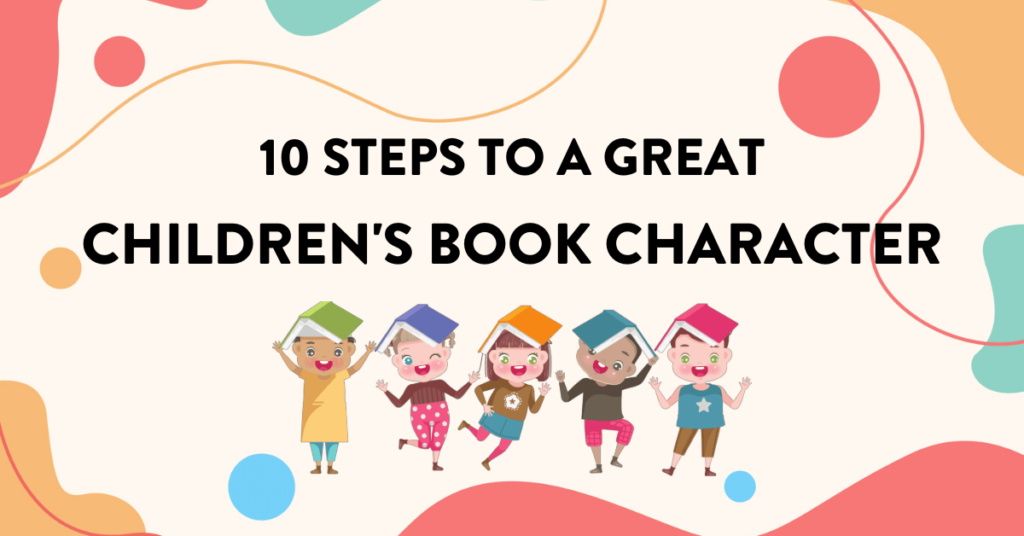
When embarking on the adventure of writing a children’s book, the initial excitement can be overwhelming. Characters, colors, settings, and songs might flood your imagination.
But many writers don’t make it to the finish line. This article will help you get started and write a successful children’s book, while sidestepping the typical pitfalls and mistakes.
1. Find Your Why
Whenever you start a creative work, it’s good to ask yourself WHY you’re doing this. Knowing this will help guide you as you write and publish your book.
The ‘why’ behind your book is its heartbeat. It’s the underlying purpose that will:
- Drive Your Motivation: On days when inspiration dwindles or rejections pile up, your ‘why’ is the reason you’ll keep going.
- Connect with Your Readers: Kids, though younger, are incredibly intuitive. They can sense authenticity and resonate more with stories that have depth and purpose.
- Guide Your Decision-Making: From choosing characters to the plot, your ‘why’ acts as a compass, ensuring you stay true to your initial vision.
Discovering Your “Why”
- Personal Reflection:
- Ask yourself what motivated this desire to write a children’s book. Was there a story from your childhood you wish you’d read? A gap in children’s literature you’ve noticed? A personal experience or lesson you want to share?
- Your Target Audience:
- Imagine the child who’d be reading your book. What would you like them to feel, learn, or take away from it?
- Inspiration from Personal Life:
- Real-life experiences, memories, or challenges can offer a goldmine of ‘whys’. Perhaps you’re writing to help kids cope with a specific situation, like the first day of school, or making friends.
- Test Your ‘Why’:
- Once you’ve articulated your ‘why’, share it with friends or fellow writers. Does it resonate? Does it feel compelling?
If you don’t know your “why” yet, then consider taking my course, “Two Weeks to Your Best Children’s Book,” which will walk you through the whole process before you start writing.
2. Choose an Age Group
Every child is on a unique developmental journey, and as a children’s book author, understanding these stages ensures that your book is age-appropriate and engaging.
Why Age Matters
- Developmental Stages: Children of different ages have varied cognitive abilities, emotional depths, and attention spans. Your content should align with these nuances.
- Vocabulary and Language: A story for a two-year-old would lean heavily on simple words and repetition, whereas a book for a 10-year-old can introduce more complex vocabulary and themes.
- Illustrations: Younger kids rely more on visuals to understand a story, while older children can grasp more abstract concepts with fewer illustrations.
- Conflict: younger children require very light, innocent conflict, or perhaps almost none at all. While older kids can handle topics like bullying, meanness, physical and emotional pain, and other more mature topics.
The Basic Age Breakdown
- Board Books (0-2 years):
- Features: Sturdy, often with tactile elements.
- Content: Simple, repetitive text with bright, bold illustrations. Think shapes, colors, and basic concepts.
- Picture Books (3-7 years):
- Features: Rich illustrations that carry the story.
- Content: Relatively short text with simple story arcs. Themes can be broader, including friendship, emotions, or adventures.
- Early Readers (5-7 years):
- Features: More text than picture books but still highly illustrated.
- Content: Simple sentences, a linear plot, and recurring characters to help kids build confidence in reading.
- Chapter Books (6-9 years):
- Features: Divided into chapters, fewer illustrations.
- Content: More complex stories with multiple characters and deeper themes. Still, the language remains relatively straightforward.
- Middle Grade (8-12 years):
- Features: Longer narratives, complex plots.
- Content: Deeper character development, themes like friendship conflicts, family issues, and self-discovery.
- Young Adult (12+ years):
- Features: Can be as complex as adult books.
- Content: Deals with more mature themes like romance, identity crises, societal challenges, etc.
Tips for Choosing the Right Age Group:
- Reflect on Your Passion: Are you keen on crafting whimsical tales for tiny tots or diving into deeper narratives for tweens?
- Research: Visit a library or bookstore. See what’s popular in each age category and where your book idea might fit.
- Check Your Audience: how old are your kids or your grandkids? That is probably the age range your’e writing for.
- Ask for Feedback: Share your idea with educators, parents, or children themselves to gauge if it aligns with your targeted age group.
If you want more advice on how to choose the right age group, I have some visuals in my article “How to Write a Children’s Book in 12 Steps.”
3. Checklist Before You Begin
You probably have an idea already for your book. But here are some good questions to ask yourself before you start writing.
- What is the main conflict of my story?
- Who is the main character of my story?
- Count up all the characters in your story: if it’s more than 4, you have too many characters.
- Can you write this story in under 1000 words? If not, then you have a MG or middle grade book, or perhaps a chapter book, rather than a children’s picture book.
- Is this a story that will work well with illustrations? For instance, if your entire idea is a conversation between an adult and a child in a single room, that will be very difficult to illustrate. Make sure you have lots of different scenes and places in your book.
But don’t spend too much time before you start writing. I know many writers who think about a book for a decade or more, and you don’t want to waste that time.
4. Brainstorming
This is the moment to consider adding another element to your story or taking something away.
- Maybe your main character should be a cat rather than a little girl
- Maybe it needs to take place in a magical land rather than in the real world.
- Maybe you need to add an antagonist so your main character can battle them
Unhook your imagination and think of a bunch of different permutations for your book. In fact, that’s a great exercise: think of 10 different ways you could possible tell this story, considering these type of variations:
- What if you told it from a different point of view? (like the parent, the best friend, the antagonist, or an insect)
- What if you started in a completely different place (it’s a good rule to start as close as you can to the action).
- What if you changed the setting of the story — would that impact the way it’s told?
A good way to brainstorm is to read a bunch of different children’s books. Remember in old movies and books when they would “seed” rainclouds in order to try to provoke the rain?
Well, reading is like seeding your imagination. You are trying to trigger thoughts and storylines, and one of the best ways to do that is to read what others have created.
5. Talk it Out
Two minds can be better than one! Chat with friends, family, or fellow writers. They might offer a perspective you hadn’t considered.
Try to explain your story to them and watch their reaction. Are they excited? Do they seem interested? Ask for suggestions on how to make the story better.
Guidance on Discussing Your Story
- Set the Stage: Begin by explaining that this is a work in progress. Mention any specific areas where you’re seeking feedback.
- Summarize the Story: Narrate the story as you imagine it, trying to hit the high points. This makes the session more interactive and can help you spot areas where the story drags.
- Ask Open-ended Questions: Rather than asking if they “liked” it, ask “What did you think about the character’s decision?” or “How did the ending make you feel?”
- Be Receptive, Not Defensive: It’s natural to be protective of your work, but be open to feedback. It comes from a place of wanting to help.
- Take Notes: Carry a notebook to jot down insights, suggestions, or points of confusion that arise during the discussion.
But no matter what type of feedback you get, make sure to stay true to your core. You want to ensure the essence of your story remains intact.
6. Outlining
Sometimes it’s a great idea to outline your children’s book before you begin. This can help you spot obvious errors, and also help you understand your story better.
Here are some tips on how to outline a children’s picture book:
- Include only the major characters in the story – you don’t need to get into the weeds with every minor character
- Highlight the major plot points – what’s the main conflict? When does the antagonist appear? What is the climax? Where does your character fail?
- What happens on the last page of your book? What is the very last line of the book — you should definitely know where the book ends.
The outline shouldn’t be longer than half a page – you might only need 10 lines or so to sketch out the main plot points.
If you’re the type of person who doesn’t outline, that’s okay too. But you should have some idea of the ending of your book — that way you’re writing toward that ending from the very first page.
7. The Pitch
Another useful technique is to write a “logline” or “pitch” for your children’s book. This is a single sentence that summarizes the whole book and makes the reader want to read it.
If you’re forced to put the core of your story into a single sentence, it’ll help you understand what’s at stake and why a reader would want to read it.
You don’t need to include the ending or resolution of the book, just the premise that would appear on the back cover, which is designed to get a reader to want the book.
Here’s some examples of pitch formats:
- A “What if” concept:
- “What if a tiny dragon believed he was a seagull?”
- The “Main Conflict” pitch:
- “Daisy the dragon has grown up amongst seagulls and thinks she’s one of them.”
- The “When X happens, Y happens”
- When Daisy the Dragon grows up among seagulls, she is super timid until the fisherman take over the bay.”
The idea for your book is usually pretty fuzzy before you write it down, and writing the pitch is a way for you to clarify exactly what story you’re trying to tell.
8. Drafting
The goal in your first draft is simply to get the story onto the page.
It doesn’t have to amazing. It doesn’t even have to be good! You’re just trying to spill everything onto the page (you can always clean it up later).
Don’t put the pressure on yourself to get it all right the time. Tuck that perfectionism in your back pocket and just go full bore over the page, typing as quickly as you can.
If you aren’t writing your whole book in less than an hour, you’re doing it wrong.
Seriously.
Don’t belabor the drafting process — speed is key. Your goal is to turn off your editor brain (this is the brain that doubts everything you do, the side of your brain that’s constantly judging you and your work). Turn on the Nascar Racecar Brain, that just wants to burn up the track and lay down a story as quickly as possible.
Once you have that draft down, then you move onto the revision stage!
And once that’s finished, you can hire me as an editor.
I don’t just correct punctuation and grammar, I talk about the big picture story of your book — things like plot, characters, pacing, beginning/endings, and everything else.
My goal is to have your readers beg their parents to read it every night.
After that point, it’s time to publish. Check out Bookfox Press, where we make the publishing process easy for you.



